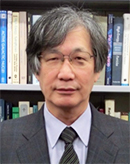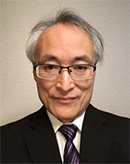The Fifth ISAS Award (FY 2018)
We awarded the Fifth ISAS Award to the following three individuals in January 2019, including a special prize honoring one individual for his long years of service. We at JAXA ISAS would like to express our deepest gratitude for the cooperation and support we receive from these external organizations and will continue to work toward further external collaboration.
| Recipient (honorifics omitted) | Reason for award |
|---|---|
| Shoji Torii | [Special Award] for CALET Observations of High-energy Cosmic Ray Electrons |
| Yasunori Nagata | For Applications of Private Satellite Communication Networks for Spacecraft and Contributions to Overseas Balloon Experiments |
| Hirohito Otsuka | For Practical Application of a Rhumb-line Control System for Microsatellite Launch by SS-520-5 Sounding Rocket |
Recipient Profiles
Shoji Torii
Professor
Waseda Research Institute for Science and Engineering

Special Award in Recognition of
CALET Observations of High-energy Cosmic Ray Electrons
For many years, Shoji Torii has led precision observations of electrons in space using spacecraft and has produced tremendous results. In observations of high-energy cosmic ray electrons using the ISS-mounted Calorimetric Electron Telescope (CALET), he led a Japan–U.S.–Italy collaborative research team to full success in the first full-scale space observation mission in Japan. This latest result greatly contributed to advances in astrophysics.
Shoji Torii
Shoji Torii completed the coursework in a Kyoto University doctoral program (cosmic rays) in 1977 and received his Ph.D. in Physics from Kyoto University in 1978. Held positions at the University of Tokyo’s Institute for Cosmic Ray Research, Utah State University, Kanagawa University, and, since 2005, at Waseda University. He has worked in coordination with ISAS, the National Institute of Polar Research, and other organizations to observe cosmic electron beams using balloons. Since 2010, he has been developing CALET for the Japanese Experiment Module “Kibo” onboard the International Space Station as an invited staff (lead developer) at JAXA’s Space Environment Utilization Center. Since CALET’s launch in August 2015, Professor Torii has overseen CALET’s operation, data reception, and data analysis at the Waseda CALET Operations Center of Waseda University, and he continues to conduct research.
Yasunori Nagata
Associate Professor
Faculty of Engineering
Graduate School of Natural Science and Technology
Okayama University

Award in Recognition of
Applications of Private Satellite Communication Networks for Spacecraft and Contributions to Overseas Balloon Experiments
Yasunori Nagata has contributed to the application of private satellite communication networks in the development of positioning systems and telemetry and command systems for spacecraft. The results of his research have been applied in overseas balloon experiments, sounding rocket experiments, and the EGG microsatellite. These results have been used in both functional demonstrations and actual operations, and further developments are expected in the future.
Yasunori Nagata
Yasunori Nagata obtained his Ph.D.from the University of Tokyo in 2012. After serving as a JAXA aerospace project researcher, he assumed his current position in 2014. He has been involved in the development of communication systems using private satellite communication networks since his time as a doctoral student, and he has been developing real-time data-sharing systems in R&D groups for flight experiments involving large balloons, sounding rockets, and microsatellites. His research focuses on high-velocity gas dynamics related to atmospheric reentry.
Hirohito Otsuka
Chief Engineer
Rocket Technologies Division
IHI Aerospace Co., Ltd.

Award in Recognition of
Practical Application of a Rhumb-line Control System for Microsatellite Launch by SS-520-5 Sounding Rocket
Hirohito Otsuka has experience in the development of the M-V, Epsilon, and various other rockets, and enthusiastically worked toward creating design standards for developing the SS-520-5 sounding rocket. Small-rocket design requires special considerations, but Mr. Otsuka vigorously led this project from basic planning to on-site operations in just one year. for the need for practical rhumb-line control systems is expected to grow in the future, and these systems prove to be an epoch-making advance directly contributing to the evolution and advancement of space science.
Hirohito Otsuka
Hirohito Otsuka has held positions in the R&D Center and Space Technologies Department at Nissan Motor Corp.’s Aerospace Division, and is currently involved in the design of control systems incorporating control theory, paraglider guidance, dynamics research and development, and the development and initial installation of guidance systems for TR-IA and M-V rockets. He joined IHI Aerospace in 2000, where he was involved in overall M-V rocket operations. Following that, he led development after the Epsilon rocket launch, and is involved in initial launch and development of the enhanced Epsilon rocket. He was involved in development of the SCI impactor for Hayabusa 2. He led initial conceptualization and development of the SS-520-5, the world’s smallest satellite-launching rocket. He is currently engaged in research on system design methodologies using new space transport system concepts and AI technologies.
